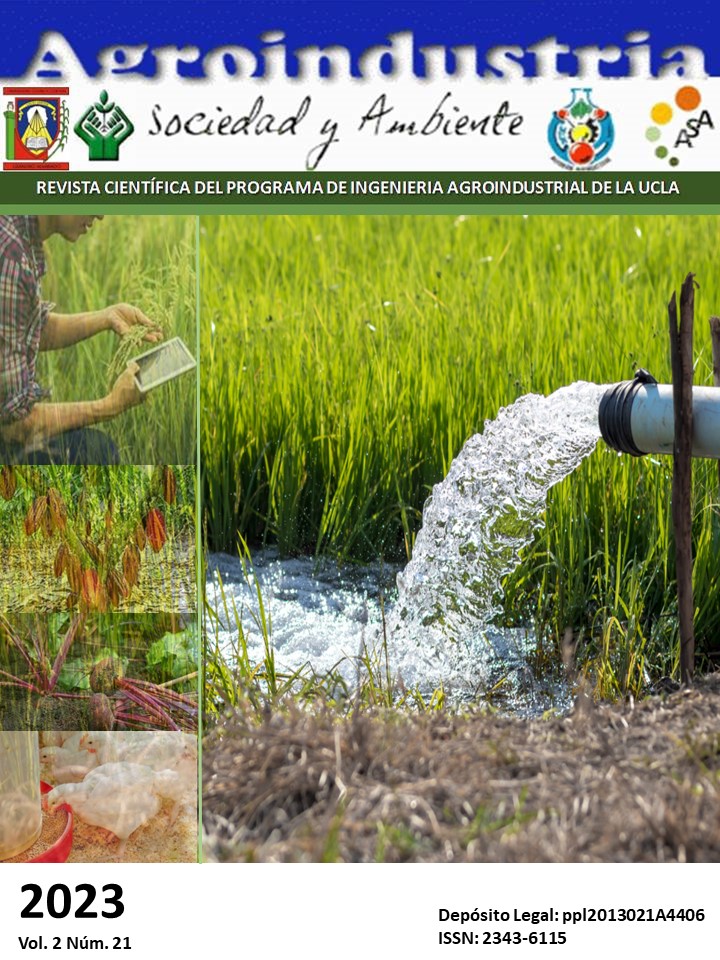Evaluation of the propagation and fermentation process of two Saccharromyces cerevisiae yeast strains and their influence on the sensory profile of the alcohol obtained in the first distillation, at Destilerías Unidas S.A.
DOI:
https://doi.org/10.5281/zenodo.10389947Keywords:
propagation, fermentation, Saccharromyces cerevisiae, alcohol, congenersAbstract
In the present work, the propagation and fermentation process of two Saccharromyces cerevisiae yeast strains was evaluated. The Y193 and Super Yeast Alcotec Turbo 24 strains were used from new cells grown in the laboratory. Two samples of the Y193 strain were used: one was from the reinforced industrial process and the other was from new cells grown in the laboratory. The propagation and fermentation process was carried out at laboratory and industrial level. The fermentation efficiency is above 85% and the fermentation age was 19 - 20 hours. All three yeasts evidenced the production of similar odors in the first distilled alcohol. Of all the yeasts Y193 from the industrial process has much milder odors compared to the samples of fermentations with new yeast. Among the two yeasts with new cells grown in laboratories, the Y193 strain has heavier odors (heads, tails, oily) and the Super Yeast Alcotec Turbo 24 strain has a predominance of sweeter-fruitier odors. It was obtained that in the three alcohol samples from the fermentations using three strains the congeners present were: acetaldehyde, ethyl acetate, i-butanol, N-propanol, I-amyl and furfural. For acetaldehyde and furfural, there is no statistically significant difference between the means at the 95% confidence level. For ethyl acetate, N-propanol, i-butanol and I-amyl there is a statistically significant difference at the 95% confidence level. In conclusion, the two biological processes propagation (for cell growth and to obtain biomass) and fermentation (to produce alcohol) influence the sensory profile of the alcohol obtained in the first distillation.
Downloads
References
Fenaroli, G. (1971). Fenaroli´s handbook
of flavor ingredients. Volumen II. 2da ed. Published by CRC Press. Milano, Italia.
Frazier, W. (1976). Microbiología de los
alimentos. 2da ed. Editorial Acribia.
García, J. (2008). Maridaje, enología y
cata de vinos. Málaga. [Artículo en línea]. Disponible: https://books.google.co.ve/books?id=x1pVoCIFrEYC&printsec=frontcover&dq=inauthor:%22Jes%C3%BAs+Garc%C3%ADa+Gallego%22&hl=es-419&sa=X&ved=0CCgQ6AEwAmoVChMIuOH_m6P8xgIVR9IeCh0GcgHr#v=onepage&q&f=false Consulta: 2023, septiembre 22.
Garissini, L. (1964). Microbiología
Tecnológica. Universidad Central de Venezuela. Ediciones de la biblioteca. Caracas, Venezuela.
Jorgensen, A. (1959). Microbiología de
las fermentaciones industriales. 7ma. ed. Editorial Acribia. Zaragoza, España.
Owen, P. (1989). Biotecnología de la
fermentación. Editorial Acribia. Zaragoza, España.
Published
How to Cite
Issue
Section
Copyright (c) 2023 Franklin Rafael Gómez Hernández

This work is licensed under a Creative Commons Attribution-NonCommercial-ShareAlike 4.0 International License.




